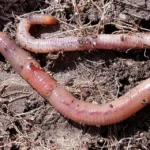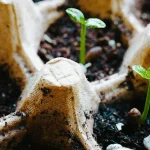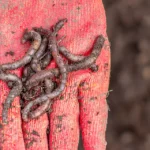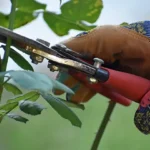As a gardening enthusiast or eco-conscious individual, you might already know the importance of red wigglers—the tiny soldiers of your compost bin. These worms are instrumental in boosting plant health and aiding sustainable gardening practices.
They consume kitchen scraps and organic waste to create nutrient-rich compost, commonly known as ‘black gold.' But how often should these garden helpers be fed? This guide will help answer that question and provide some best practices for worm composting.
Red Wigglers Feeding Frequency:
Red wigglers are voracious eaters and, under the right circumstances, can consume half their body weight in food daily. However, this doesn't necessarily mean you must feed them daily. Feeding your red wigglers once or twice a week is typically recommended. The frequency largely depends on the size of your worm population and how quickly they're consuming the food you provide.
It's all about achieving a balance; overfeeding can lead to problems like foul odors or attracting pests, while underfeeding may not provide enough nutrients for the worms' survival and reproduction.
In general, if you notice the previous feeding has been mostly consumed (you should see only castings – worm excrement that looks like dark, rich soil), it is an indication that it's time for another feeding session.
Nutrient Requirements:
Another crucial aspect is ensuring that your red wigglers receive all the nutrients from their diet and frequency.
Worms thrive on a balanced diet of kitchen scraps and yard waste, which includes fruits, vegetables, coffee grounds, shredded paper or cardboard, eggshells (crushed), tea bags, etc.
Avoid feeding them meat or dairy products, which can create bad odors and attract pests. Similarly, citrus fruits and onion scraps should be avoided due to their high acidity, which is unfavorable for worm composting.
Best Practices for Feeding Red Wigglers:
1. Chopped Food: Worms don't have teeth, so the smaller the food pieces, the easier they consume. Before adding your kitchen scraps to the compost bin, make sure they're chopped or shredded into small pieces.
2. Bury The Food: Instead of placing the food on top of your compost heap, bury it a few inches under the surface. This helps prevent fruit flies and other pests.
3. Maintain Moisture Levels: The bedding in your worm bin should have the dampness of a wrung-out sponge. If it's too dry, add some water; if it’s too wet, add more bedding materials—ideally something absorbent like shredded newspaper.
4. Rotating Feeding Zones: Try feeding in different sections of your worm bin each time you feed them; this technique encourages worms to move throughout the bin and helps in more uniform composting.
5. Keep Track: Keep a log of when and what you feed your worms. This will help you understand their consumption rate and adapt their feeding schedule accordingly.
There isn't a one-size-fits-all answer to how often red wigglers should be fed due to factors such as their population size and how quickly they process their food source, but as a rule of thumb, offering new food once or twice a week seems to work well for most situations.
Remember that worm care is not just about feeding frequencies—it's about providing balanced nutrition and maintaining an optimal living environment for these eco-warriors. With careful attention and regular maintenance, your red wigglers can turn kitchen scraps into nutrient-rich compost that will benefit your garden immensely.

Lifelong bacon junkie. Lifelong internet fanatic. Hipster-friendly travel aficionado. Twitter lover. Avid food buff. Incurable travel trailblazer.













